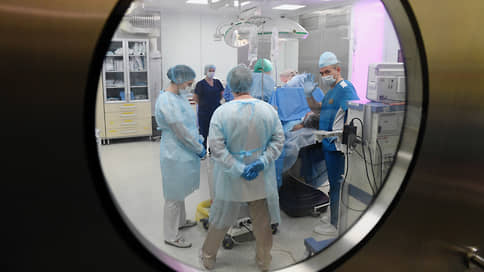Russian doctors complained about the idleness of expensive high-tech equipment
[ad_1]

A significant part of Russian doctors complained about the idleness of expensive high-tech equipment. These are the results of a survey of the professional service “Aktion Medicine”. Doctors said the main reasons for the downtime were the lack of competent specialists or lack of supplies. However, Roszdravnadzor claims that only 0.23% of the equipment purchased since 2019 as part of the Healthcare national project is idle. The majority of experts interviewed by Kommersant rather agree with Roszdravnadzor.
The professional service “Aktion Medicine” conducted a survey on the demand for high-tech medical equipment. The study involved 532 people – doctors and nursing staff from eight federal districts, the Donetsk and Lugansk people’s republics, and the Zaporozhye region.
Low workload and downtime of such equipment were noted by 28.2% of respondents (148 health workers). The main reason is the lack of competent specialists (this was stated by 57.4% of respondents who complained about downtime). The second most common reason is that the equipment requires repair, but there are no funds or spare parts (28.4%). The third is a shortage of consumables (20.3%). Finally, more than 14% reported that the medical equipment in their institutions is obsolete and impractical to use. We add that 52% of respondents, due to equipment downtime, are forced to refer patients to other medical organizations – both public and private.
Kommersant asked Roszdravnadzor to comment on the survey data. The supervisory service said: according to their data, only 0.23% of the equipment supplied since 2019 as part of three federal projects of the national Healthcare project is idle. Moreover, in case of ineffective use of equipment, “response measures” are applied. Indeed, regional prosecutors regularly report inspections of clinics. Thus, in February of this year, the prosecutor’s office of the Central Administrative District of Kursk stated that in one of the medical institutions, equipment purchased in the summer of 2022 for blood tests was not functioning. In another medical organization, bedside monitors purchased in 2021 (used to monitor the health status of patients) and equipment for heart and vascular operations did not work. As the inspection showed, the equipment with a total cost of over 55 million rubles. stood idle due to lack of consumables.
In the Jewish Autonomous Region, due to the lack of a specialist, the Refikon immunochromatographic analyzer purchased in 2011, intended for conducting preliminary chemical and toxicological studies, was not used. The prosecutor’s office of the Oktyabrsky District of the Jewish Autonomous Region discovered this in 2022, made a report to the medical organization – and only after that “the specialist was trained.”
The chief freelance neurologist of the Russian Ministry of Health, Nikolai Shamalov, considers the data of Roszdravnadzor “more valid, since they are based on a comprehensive analysis of the operation of medical equipment, and not on the personal impressions of doctors.” “The results of our field events in the field of neurology are very close to the data of Roszdravnadzor in terms of equipment operation,” said Mr. Shamalov.
General Director of the National Medical Research Center of Cardiology named after. Chazova Sergey Boytsov also believes that the results of the survey of the Aktion Medicine service do not reflect the real picture. Thus, according to his data, the daily workload of X-ray angiographic units averages 70–80%.
Chief freelance cardiologist of the Russian Ministry of Health Evgeny Shlyakhto believes that the survey results may not coincide with the data of Roszdravnadzor due to insufficient representativeness of the sample. “Based on the experience of the 42 regions he oversees, it seems unlikely that high-tech equipment was purchased without a plan for training specialists and facilities,” he says. “Undoubtedly, equipment sometimes breaks down. But in such a situation, each region provides for the redistribution of flows between medical organizations, including nearby regions.”
Mr. Shlyakhto added that high-tech medical equipment is actively used to provide assistance to patients with cardiovascular pathology. Thus, the total number of interventions for patients with myocardial infarction increased by 37% – and this is against the backdrop of a decrease in the total number of heart attacks. The number of X-ray surgical interventions in patients with stroke increased by 32.2%; MRI studies of the heart and blood vessels began to be performed 2.5 times more often, and the use of CT for examining cardiology patients increased by 16%.
However, the CEO of the consulting company MDPro, an expert in the medical devices market, Alexei Vanin, doubts that the downtime rate of medical equipment can be less than a percent, as Roszdravnadzor indicates, even if downtime is understood as a situation where the equipment is inoperable. “I think there are more situations like this. I suspect that Roszdravnadzor and the Ministry of Health do not take into account the time that the equipment is not used due to its work schedule or the absence of a specialist,” says Mr. Vanin. According to his estimates, a more realistic downtime rate of around 5% is given that any equipment periodically fails. And Alexey Vanin calls the results of the survey of the Aktion Medicine service optimistic: “If only 28% of doctors noted some kind of problem with downtime, it means that more than 70% are doing well in hospitals.”
[ad_2]
Source link








